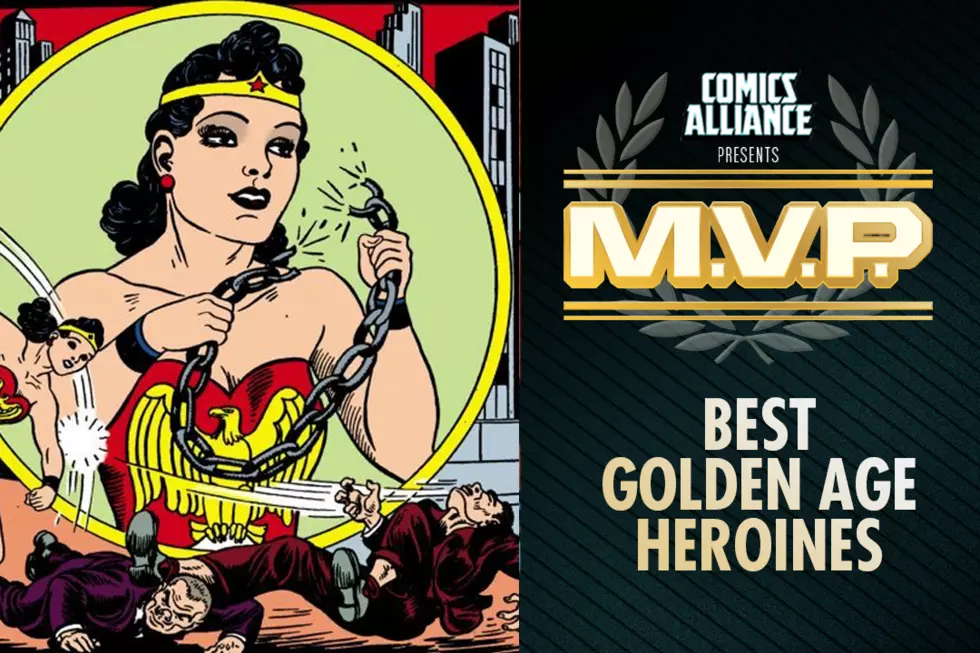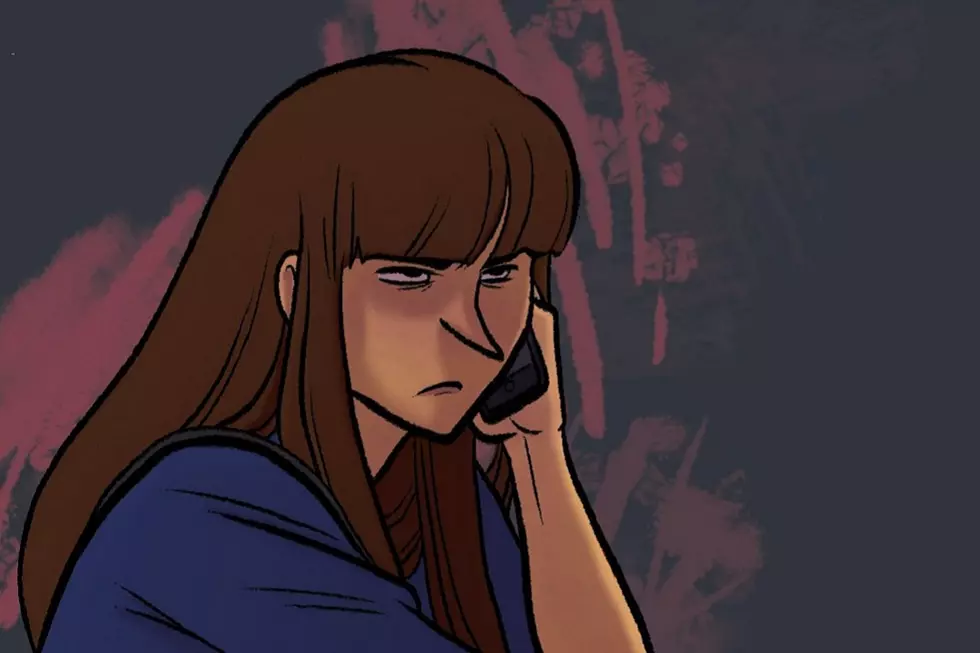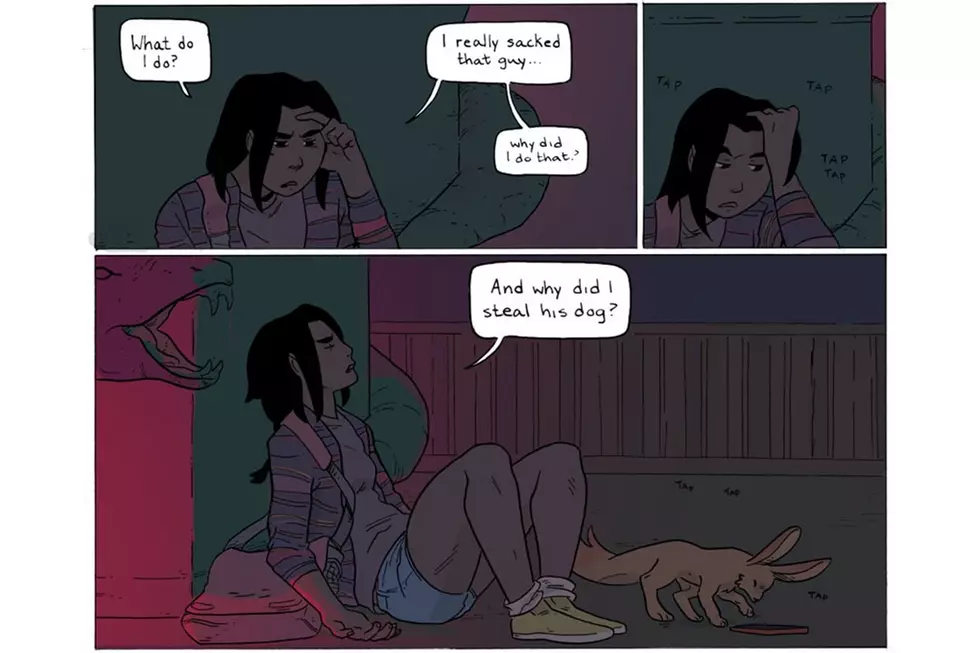
Game of Throes: Rape Is Not a Shortcut to Narrative Substance
WARNING: While the following images have been censored, they remain fairly graphic and may disturb some readers and may also be considered NSFW.
I am so tired of writing about rape.
If you didn't catch the news, last Friday, the website Comic Book Resources posted a five-page preview of the latest issue of the Game of Thrones comic book adaptation. And the pages they published — the pages Dynamite Entertainment sent out as representative of the book, which is a standard practice for comic book publishers — included an incredibly graphic rape scene. Erect penis, front and center. Woman bent back nearly double, naked, arched like a porn star.
It just so happens that was also the week that HBO decided to add—and then vigorously defend — a graphic rape scene in the Game of Thrones TV series (a trend the network continued this week), and that both fall in the middle of Sexual Assault Awareness month — and yes, thanks, HBO, Dynamite and CBR, we are in fact extra aware of sexual assault now, so, well done, there. It's worth noting, too, that this is coming on the heels of an incident where a fellow comics editor and journalist got a slew of graphic rape threats for having the temerity to critique the portrayal of a teen girl in a piece of cover art (also published on CBR).
But it's also not just this week, or this month. It's this year. This decade. This lifetime. This is business as usual.
I am so tired of writing about rape, and especially rape in pop media, because I have had this conversation dozens and hundreds and thousands of times, as a crisis advocate and an educator, as an editor and writer, as a human being. Because last week, a fellow pop-culture journalist realized that she's gotten so many rape threats that they've begun to feel routine, and this is the landscape where I work every day.
Because rape is still the go-to for lazy storytellers trying to look edgy or add depth to a heroine's backstory with a minimum of thought.
Because all of this is happening in visual media where women are hypersexualized to an extent that involves posing dead women like pin-up girls, making it so there is no act involving a female character that is not glamorous and sexualized.
Because a major comics news site thought it was okay to post a graphic rape without even a token "NSFW," and because before that, a publisher thought it was a good idea to add that panel in the first place; because an artist drew it like pornography, and an editor signed off on it, and nowhere in this process did anyone apparently think this might not have been the best course of action.
The Game of Thrones books by George R.R. Martin contain rape — and consensual sex — but rarely in graphic detail. Conversely, both have been given front-and-center roles in the TV adaptation for HBO. Twice, the series has courted controversy by depicting consensual encounters from the books as rape — in the first season, Danerys's marriage consummation with Khal Drogo; and again this season, when Jaime Lannister raped his sister Cersei beside the corpse of their son.
Those changes are significant because, for the most part, the story around them stays the same. As the AV Club wrote, "The Daenerys Targaryen [from the books] who falls in love with a man [Khal Drago] who granted her respect when no one else would is different from the Daenerys Targaryen who fell in love with her rapist [on the TV show].” To make Jaime a rapist transforms him from a morally gray but ultimately sympathetic figure to a monster — but a monster who, in the context of the show, continues to live the same life and evoke the same responses as the literary counterpart who's still on the other side of that moral event horizon.
On a larger scale, Game of Thrones' use of both rape and consensual sex on television is gratuitously one-sided — how many penises have we seen so far? The graphic rape content serves very little narrative purpose and, at this point, adds little to the world the show has built; instead, it's played for casual shock's sake, and the effect is along the lines of a kid trying to prove he's grown up by peppering his language with profanity.
This is not rare: for a long time, rape has been media shorthand for "edgy" and "adult," a go-to for artificial depth. It's been so badly overused that it's become a thin trope. It's offensive in connection to its real-world context, as Laura Hudson discussed last week at Wired; but it's also offensively lazy storytelling, a cheap stand-in for character development, and, at worst, a means of spicing up trauma with a little extra titillation.
So: let's talk about the rape scene that showed up on Comic Book Resources last week, the one from Game of Thrones #20, part of Dynamite Entertainment's comic book adaptation of the Martin novels.
Visually, Game of Thrones is a pretty traditional mainstream American comic — which is to say, it's constructed and presented as a straight male power fantasy. Men in comics like this one are exaggeratedly strong. The women are exaggeratedly — and always — sexy. They're sexy on the phone. Sexy on the job. Sexy fighting. Sexy tortured. Sexy dead.
Sexy raped.
The anonymous woman in the preview page is fully naked, arched back at an angle that showcases not only as much skin as possible, but also the rapist's substantial erection. If it's supposed to contrast darkly with the caption — "This was the deliverance the Dothraki brought the lamb men” — it misses its mark badly; instead of viscerally horrific, it verges into pornographic, with a slapstick "AAAIEEE!" slapped in the middle. Story-wise, this is background action: after that establishing shot, which takes up nearly a half a page, we pull back to the characters we're actually there to see.
The rape, though, is what sets the tone — less of the scene that follows than the sensibilities that inform their telling.
After a few days online and a cascade of angry tweets when it was finally discovered last Friday, CBR quickly pulled the preview and apologized directly via tweet to journalist Janelle Asselin, who’d called the site out on Twitter. CBR characterized their error as a consequence of a “batch upload” — implying that no one at the website had bothered to review it before posting. The full preview remains online at other outlets.
Dynamite publisher Nick Barrucci issued this public apology last week:
"I and the staff of Dynamite Entertainment apologizes; while the Game of Thrones source material is mature and we are faithful to that material, we should have been more careful in how we released that content for previews. We have learned from this unfortunate error, and will work to avoid future such incidents."
The issue, then, as Dynamite apparently sees it, is not the inclusion or execution of the scene itself, but merely the faux pas of using it in a wide-release promotion. For CBR's part, the site's Executive Producer Jonah Weiland has made a personal statement about the matter in the comments below this very article, saying, "That image and how the scene was depicted has no place in comics."
It's possible to use rape well and tastefully in fiction in just about any medium, at least in theory. Certainly, it's been done. But it requires an awareness of both content and connotations that both Game of Thrones adaptations seem to lack; an understanding that intent and execution are not the same, and that neither will cancel out the larger media and social landscape that will inform a scene's impact.
There are ground rules so basic it's almost bizarre to type them out, and yet:
If you do not understand what constitutes rape, you should not be filming rape scenes.
If you do not understand how to portray rape without sexualizing it, you should not be drawing rape scenes.
If you do not understand the implications of adding graphic rape to a narrative, you shouldn't be doing it.
The quote at the top of the "Gratuitous Rape" entry on TV Tropes reads, "Take a good look at your story. Why do you think a rape is what you need for it to progress? Is there something else that could fill the same function? Unless you have a damn good reason to include rape in a story, you probably shouldn’t."
That quote is from an article I wrote seven years ago this month — and have since written, in form after form, context after context, more times than I can count.
What Game of Thrones — and so many other comics, and movies, and TV series, and books — do is not edgy. It's certainly not new; this ground has been broken again and again, overworked until nothing could thrive there. It's not even offensive in an interesting way.
I love comics; I love television. I care about them as a consumer, as a critic, as a creative professional. I want them to be good. I want payoff, not what amounts to a very violent and sexist take on sleight-of-hand.
But most of all? I am so tired of writing about rape.
A previous version of this article said "After a few hours and a cascade of angry tweets, CBR pulled the preview...". We've corrected it to reflect the fact that the offending preview was available at CBR for several days before Asselin tweeted her complaint, after which it was promptly deleted.
More From ComicsAlliance
![When Everything Is Pink, Nothing Is Pink: Sarah Stern On Color And Creativity [Interview]](http://townsquare.media/site/622/files/2017/03/Cindersong-feat.jpg?w=980&q=75)








